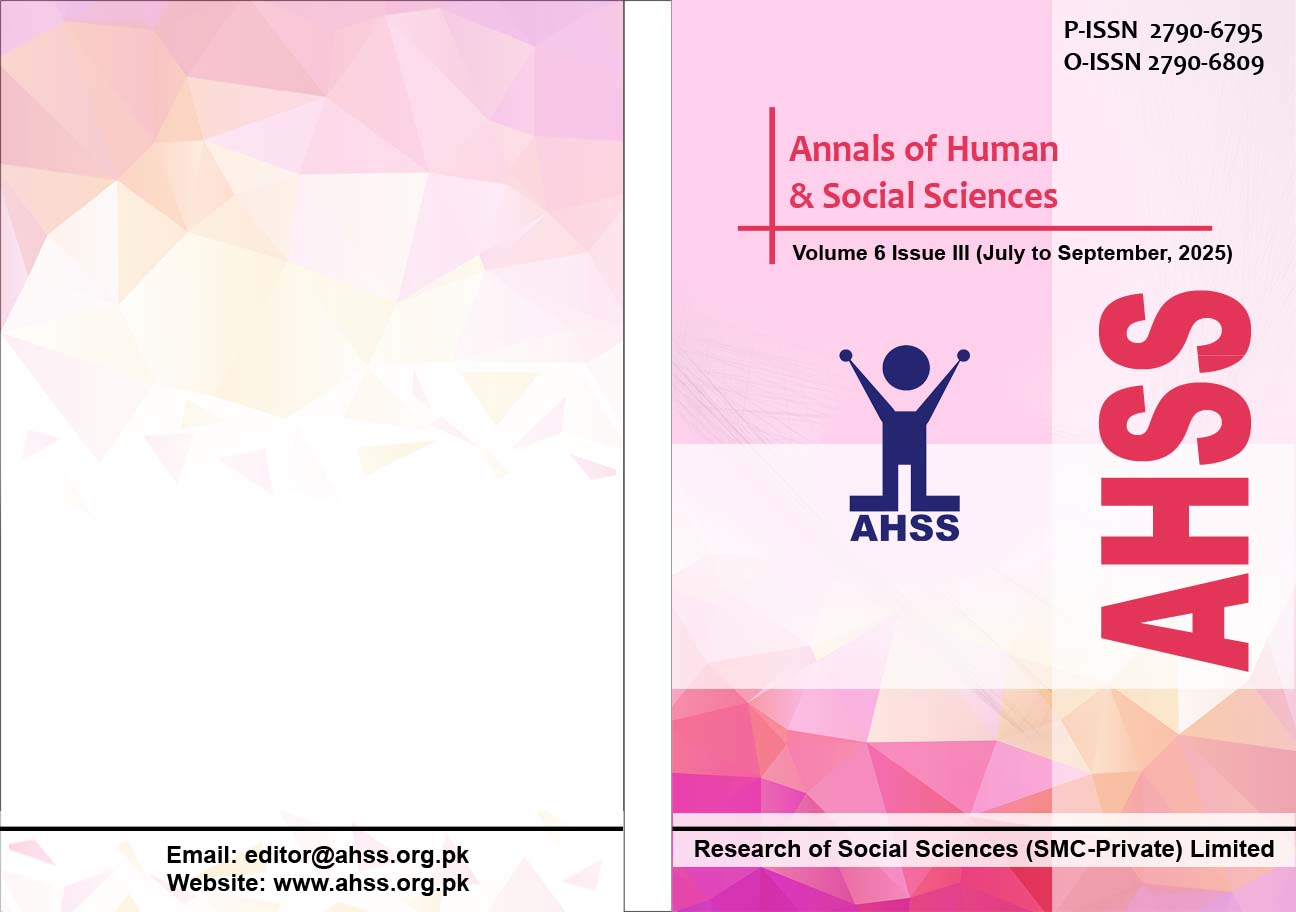Extremist Ideologies among Youth: A comparison of various Ethnic Groups residing in Quetta
DOI:
https://doi.org/10.35484/ahss.2025(6-III)41Keywords:
Extremist Ideologies, Ethnicity, Gender Differences, Youth, Quetta, Violent ExtremismAbstract
This study investigates the prevalence of extremist ideologies among youth and genders aged between 18-38 from various ethnic groups in Quetta, Pakistan. The multi-ethnic population of Quetta consisting of Hazara, Baloch, Pashtun, etc. (Punjabi, Urdu-speaking, mixed origin) has to manage complicated social and political issues. In this regard, vulnerability to extremist beliefs can be augmented due to ethnic and gender entanglements. A quantitative, cross-sectional, comparative design was employed. The Violent Extremism Scale (VES, 2023) was administered to 120 participants across four ethnic groups. Descriptive statistics summarized the data, ANOVA tested differences between ethnic groups, and an independent-samples t-test examined gender differences. The mean extremist ideology scores were highest among Baloch youth followed by Pashtun, Hazara and others. There was a higher score in males than in females with both ethnicity and gender having significant impact. It is suggested that culturally and demographically sensitive interventions which consist of educational schemes, community discourse, and youth counseling would decrease the risk of extremist ideologies among multi-ethnic youth in Quetta.
Downloads
Published
Details
-
Abstract Views: 275
PDF Downloads: 110
How to Cite
Issue
Section
License
Copyright (c) 2025 Annals of Human and Social Sciences

This work is licensed under a Creative Commons Attribution-NonCommercial 4.0 International License.

RESEARCH OF SOCIAL SCIENCES (SMC-PRIVATE) LIMITED(ROSS) & Annals of Human and Social Sciences (AHSS) adheres to Creative Commons Attribution-Non Commercial 4.0 International License. The authors submitting and publishing in AHSS agree to the copyright policy under creative common license 4.0 (Attribution-Non Commercial 4.0 International license). Under this license, the authors published in AHSS retain the copyright including publishing rights of their scholarly work and agree to let others remix, tweak, and build upon their work non-commercially. All other authors using the content of AHSS are required to cite author(s) and publisher in their work. Therefore, RESEARCH OF SOCIAL SCIENCES (SMC-PRIVATE) LIMITED(ROSS) & Annals of Human and Social Sciences (AHSS) follow an Open Access Policy for copyright and licensing.






